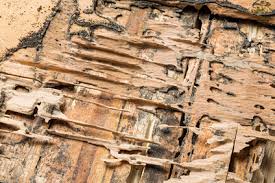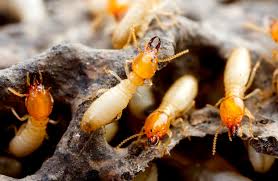Termite Control Services In Adelaide for Dummies
This page describes the three types of the termite species that are found in infestations around Australia, subterranean, drywood and dampwood, and termite.
Termites are classified depending on their nesting and feeding habits: subterranean, drywood and dampwood.
Subterranean termites are the most common kind of termite that infests wood in structures and are among the most damaging pests. Outdoors timber that is dead is mostly infested by them in contact with the soil, such as stumps, fallen trees and branches. They prefer wood that has some degree of rust already, which makes it a lot easier for them to digest it, although they can digest wood that is sound. .
The Ultimate Guide To Termite Control Review
Subterranean termites need to be to survive, where they can acquire moisture in the 30, making their nests in or close to. They tunnel to access moist soil or wood and in seasons that they float down deeper into the soil to achieve moisture. .
The termites use dirt as a substance to construct nests and shelter tubes, which are composed of wood dirt, faeces and saliva. Some species build carton nests above ground and build shield tubes (also called mud tubes) to link the nest to the ground.
Foraging is determined by the weather, with action in summer and action in chilly or conditions . In tropical regions they could forage throughout the year, with peaks during warmer, wetter conditions.
Our Termite Control Review Ideas
Drywood termites reside inside pieces of timber, wholly in colonies, generally less than 1000 individuals. There might be several colonies inside a single piece of wood or object. They could feed across annual rings as is subterranean termites, so the galleries don't adhere to the grain of wood, but they are inclined to steer clear of heartwood.

Colonies can grow for many years undetected until the wood breaks or even the termites swarm. The alates, that would be may not be made for years in a colony until the population reaches a vital point. They leave the nest to set up and discover a site that is new to mate and begin a new colony, usually not. .
Dampwood termites infest timber that go to these guys remains moist because of contact with the soil or, as an example, via a water leak in a construction. They are likely to infest timber that's outside stump or logs in contact.

The Definitive Guide for Termite Control Specialists
Dampwood termites live completely that they make big open galleries and feed . As with drywood termites, they may infest wood for years until they are discovered, which is most likely when the alates swarm from a mature colony. Swarming may happen over several months, with species swarming at times.
They're a sign of a moisture problem, if they're found at a building. They are minor pests and can be controlled in buildings by removing the supply of moisture. In live trees that they tend to feed on wood.
Species can be tricky to recognize, even to the experts. Identification is usually based on the soldiers, which is the caste that has the most distinguishable features.
Of the pest species listed above, read the article it is.
Termite Control Review for Beginners
The mind of the soldier is yellow and rectangular with darker mandibles that are thin. Body is left up to 7 mm long. It's easily confused with two other native Coptotermes species, including C. frenchi and C. lacteus (Victoria Museum)
The soldiers produce a white sticky liquid out of a opening (fontanelle) on front of mind when defending the nest from assault.
Mounds are not generally built by species, but in other regions of Australia and Queensland. They largely stumps, nests in trees, sticks, buried timber spaces, around houses under buildings and in walls. Favoured trees for nesting are various eucalypts, English oaks and peppercorns. The colony is located in the root crown or the lower portion of the trunk.
4 Easy Facts About Termite Control Review Described
Although Mastotermes darwiniensis is the destructive locally across its restricted range in tropical northern Australia, coptotermes acinaciformis is the most destructive termite species in Australia overall. C. acinaciformis attacks all lumber structures and obligations forest and ornamental trees as well as fruit trees.